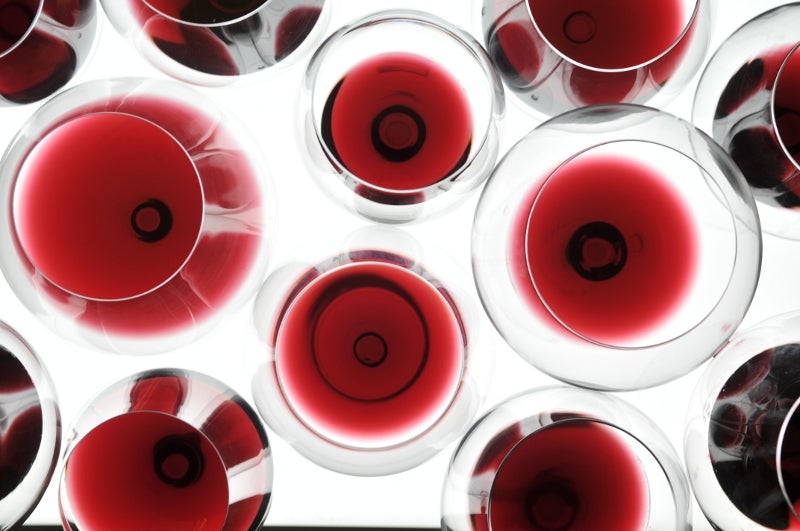
Wine appreciation: Is it objective or subjective, or maybe a bit of both? The stance taken often seems to be inconsistent, in that many critics and wine lovers will agree that it is totally subjective but then go on to say that they try to be as objective as possible. Actually, there is not necessarily an inconsistency. They could mean that it is completely a question of personal taste but that they try not to be influenced by factors other than the wine itself—by the label, for example. In other words, objective is not always the opposite of subjective: It depends on which meaning you use for each word.
Here are some definitions taken from Random House Kernerman Webster’s College Dictionary:1
Subjective
1 existing in the mind; belonging to the thinking subject rather than to the object of thought (opposed to objective).?
2 pertaining to or characteristic of an individual; personal: a subjective evaluation.
3 placing excessive emphasis on one’s own moods, attitudes, opinions, etc.?
4 Philos. relating to or of the nature of an object as it is known in the mind as distinct from a thing in itself.
Objective
1 not influenced by personal feelings or prejudice; unbiased: an objective opinion.
2 a) being the object of perception or thought.
b) belonging to the object of thought rather than to the thinking subject (opposed
to subjective).
Meanings 1 and 4 for subjective are very closely related, indicating existence in the mind rather than the external object, and are the opposite of meaning 2 for objective. The other meanings are related to personal opinion, but reference is also made to the more extreme and undesirable forms of personal opinion: bias and prejudice, aspects that tend to give an undeserved negative connotation to subjectivity in general.
In this article, I shall argue that any attempt to make objective statements about the quality of wine is fraught with problems and that wine appreciation is essentially subjective. Additionally, if you will allow me to remove the word “excessive” from meaning 3 for subjective, I shall argue that subjectivity in wine is positive and nothing to be ashamed of. Indeed, subjectivity is to be celebrated.
Perception
In order to assess the qualities of a wine, we need to perceive it, and the act of perception occurs within ourselves, involving our sensory organs and brain. At this point, I could rest my case: Wine assessment is subjective in the sense that it relates to the nature of an object as it is known in the mind, and everything that follows is based on that subjective perception. That is the basis of my argument, but there remains much more of interest to explore. If, for example, it could be shown that the nature of a wine known in the mind is consistent from person to person and time to time, then it might be possible to argue that the actual wine is so closely related to its perception that it is pointless to distinguish between the two. In practice, however, there are many factors that confound the consistency of how a wine is perceived. The most fundamental ones relate to interpersonal variations in perception.
We are familiar with the concept of color blindness, where those affected by the condition are incapable of distinguishing between certain colors. If color is regarded as an objective property—that is, one that belongs to the object rather than being created by the eye and brain—one way of taking color blindness into account is to invoke the concept of the standard observer.2 Under standard conditions, the standard observer is one who can see colors correctly, as distinct from the color- blind observer, who sees them imperfectly. However, science would formulate the situation differently. It would say that the objective reality is not color but light of different wavelengths, and that the various wavelengths are interpreted as color by the eye and brain. If the eye or brain differs from person to person, due to genetic differences or physical damage, then the interpretation of color may also vary. Even though the scientific explanation is more useful in terms of explaining the facts, the idea of a standard observer does not sound entirely ridiculous when we are considering color vision.
But how appropriate is it for smell and taste in the context of wine? Is it reasonable for us to say that flavors belong to the wine itself, and then go on to define a standard observer who can correctly perceive them all? Or is it more helpful to say that the objective reality of a wine is a complex blend of various chemicals, and that aromas and tastes exist only in the mind of the observer?
In the simplest of situations, it might make sense to adopt a standard-observer approach for practical purposes. Consider the case where an enologist needs to test for the strength of a particular aroma in wines. Potential tasters will first be screened to ensure that they are sensitive to the aroma, and those who are insensitive to it will be rejected. Effectively, standard observers for the purposes of the experiment are being selected.
However, in the more normal case of people tasting wines outside the laboratory, where a raft of various flavors and other impressions can be important, the concept of a standard observer becomes problematic. While color blindness affects only approximately 8 percent of men and 0.05 percent of women, leaving the majority of the population as standard observers, it is a lot more common to have a specific anosmia (inability to smell a particular odor).
Back in 2008, Avery Gilbert noted that more than 20 specific anosmias were known at the time, each one affecting up to 75 percent of the population, and these anosmias accounted for merely a fraction of the total variation in aroma perception.3 How does one begin to define a standard observer for aromas in this situation? For an anosmia that affects 75 percent of the population, is it the 75 percent or the 25 percent that is standard? Even if you always select the larger percentage, surely by the time you have considered each anosmia, the proportion of standard observers for all aromas must be very low. And then there are possible variations not linked to a specific anosmia to take into account as well—for example, women have a better sense of smell than men. It seems clear to me that the concept of a standard observer is not at all useful for aroma perception, which is of course vital for the assessment of wine. We simply have to accept that the perception of aroma is subjective not only in principle; in practice individual differences have a significant impact.
The impact is important enough for a belt-and-braces approach to be used in perfume design. Luca Turin describes how synthetic musk formulae always include several different musky chemicals in an attempt to allow for specific anosmias.4 Thus, if someone was unable to smell one of the chemicals, the chances are that the others would still deliver the impression of musk. This is also interesting in that it illustrates that these anosmias are for specific chemicals rather than for a class of related odors. So, just because two people can both smell a particular note in one wine, it is still possible that for another wine only one of them might be able to detect it, depending on the particular chemicals responsible for the smell.
A well-documented example of a wine-related specific anosmia is that for rotundone, which is responsible for some of the peppery nature of peppercorns. If you have ever noticed that Syrah has a peppery note, that will be due to its presence also in the wine. On the other hand, if you haven’t noticed that peppery note, it is not hugely surprising, because researchers at the Australian Wine Research Institute found that approximately 20 percent of us have a specific anosmia for rotundone.5 In other words, one fifth of the population will have no idea what people are talking about when they say Syrah is peppery. Also, anyone who has shared a wine with low-level cork taint and had discussions about whether it is corked or not, will know that our sensitivity to TCA (2,4,6-trichloroanisole, the major component of cork taint) varies hugely from person to person.
It is not only our sensitivity to aromas that can vary from person to person, leading us to perceive wine differently. On the tongue, people have vastly different sensitivities to the bitter-tasting substance 6-n-propylthiouracil (commonly abbreviated to PROP). There is a strong genetic component to PROP sensitivity, approximately 30 percent of the adult Caucasian population of North America not being able to taste it at all, though this percentage does vary around the world. The significance of PROP sensitivity is that it correlates with sensitivity to a range of other substances, leading people with high PROP sensitivity to be labeled supertasters. From a wine-tasting point of view, it is significant that supertasters have an enhanced sensitivity to many bitter flavors and a dislike of sweetness.6
Flavor perception does not vary only from person to person: It can vary with time for any single person. This is true to the extent that Donald Wilson and Richard Stevenson comment that “the most striking characteristic of human odor perception is its plasticity.”7 Examples given by Gordon Shepherd show how repeated exposure to various substances can lead to enhanced sensitivities to their smells and tastes.8 Experience not only changes our perception of a smell but also how it differs from other smells and how much we like it.
Aesthetic concepts and inter-subjectivity
Unlike flavor perception itself, the appreciation of wine quality is largely based on aesthetic concepts—such as balance, harmony, complexity, precision, elegance, power. For wine, I think it is also appropriate to include overall quality in the list of aesthetic concepts. If I say that a wine is sharp and tastes of lemon and lime, I describe it but give little indication as to how good the wine is. However, if I add that it is a 95-point wine that is balanced, precise, and elegant, I supply information about its quality and suggest the manner in which it is good.
I suspect very few people really believe that aesthetic properties reside in the wine itself, and I certainly don’t. They are all dependent on perception, and since perception is subjective, it follows that aesthetic judgments must be, too. I believe most wine lovers would also agree that aesthetic concepts are subjective not only in the sense that they belong in the mind of the observer but also in that they depend on personal taste and opinion. Nevertheless, expert taste and opinion seems to carry more weight. That is, of course, the main reason why people pay for access to the opinions of well-known critics.
However, there is some evidence that most wine drinkers would be better advised to pay more attention to the opinions of their peers, because a study has shown that experts (defined as those with any level of wine education) and non-experts rate wines differently.9 There were 506 participants and 523 wines in the study, and in total 6,175 samples were tasted and rated. One result was that while the experts’ ratings correlated with price, the non-experts actually preferred cheaper wines. To give a feeling for the magnitude of the effect, the authors say that if there were two wines where one costs ten times more than the other, experts would rate the expensive bottle seven points (on the 100-point scale) higher than the cheaper one, but non-experts would rate it four points lower. How are we to interpret these results?
I would say the results suggest that the experts are part of an inter-subjective community—that is, a community in which each individual has views about wine quality that are essentially subjective but formed in conjunction with other members of the same community. Inter-subjectivity is, I believe, as close to objectivity as you will find in wine. As far as the experts in this experiment were concerned, the contact with their inter-subjective community included wine education, where they would have been taught the practice of tasting and how to evaluate wine. Thus, they are to an extent part of the same community as the producers and merchants who decide the pricing structure. However, just because a community is large and influential, it does not make its views any less arbitrary and subjective. I would suggest that in this experiment, the non-experts would have been highly motivated to evaluate the wines they were given and see no reason to value their opinion any less.
It would also be a mistake to think that there is only one inter-subjective community that holds a monopoly on aesthetic judgment regarding wine. There is a number of communities, most of which overlap to a greater or lesser extent, and the inter-subjective communities that have little contact with each other can have rather large differences in what they regard as good and faulty wine. For example, back in 2006, when wines from Georgia were even less well known than they are now, Tom Cannavan traveled there to judge a wine competition. He wrote on his website: “It soon became clear that calibration was needed not only of palates but of expectations and cultural sensitivities. Each judge spoke in turn about wine one. Our Eastern European judges all award[ed] the wine 18 or 19 points; a gold medal. The Western judges scored it 12, 12, and 10, noting winemaking faults.”10 The Georgian judges were doubtless as sophisticated in their attitude to wine as the Western experts, but their inter-subjective consensus was very different.
Whether due to inter-subjectivity or simply personal subjective opinion, it is a matter of fact that expert aesthetic opinion of particular wines can vary wildly, and I see no particular reason to say one critic is more correct than another. A famous example is the widely different views of Robert Parker and Jancis Robinson MW on the subject of 2003 Château Pavie. Other less controversial examples crop up occasionally in the tastings section of this publication, where it is very instructive to see the opinions of different experts side by side. Often there is a degree of agreement, but occasionally it is difficult to believe the same wine is being discussed. Similar differences can be found among non-expert wine drinkers, too, though if they are sitting around the same table they will tend to agree more than if their opinions were formed totally independently.
Bias and prejudice
So, our perception of wine may be influenced by experience and genetic differences, and our opinions and aesthetics judgement by inter-subjectivity and personal taste, but that is not the limit of our subjectivity. There remain the more negative aspects: bias and prejudice.
Serving wine blind is a good way of combating prejudice but is often an imperfect solution because hints of the type and quality of wine may remain: Clues can often be found in the location, the organizers of the tasting, and the vinous likes and dislikes of your host, if it is a private affair. Also, some argue that it is better not to taste blind, saying that with more information the wine can be assessed more properly. Knowing the producer, for example, might help one judge how well the wine will age. It is a fine line, however, between being influenced by prejudice and skillfully using that extra information. The same information in the hands of a relative novice could be used to come to similar conclusions, based merely on the general reputation of the producer.
At non-blind tastings, the leader of the tasting often describes the wine as you taste it. Many may well be disappointed if they are not given this service; they want to be told what the wine tastes like so they can try to identify the flavors for themselves. Regardless, the leader of the tasting will be affecting how the wine is perceived. At worst, it can be a blatant marketing exercise or sales pitch, cynically attempting to persuade you that the wine is good. At best, it is irritating if you are struggling to form your own assessment.
On the subject of bias and prejudice, the final issue I would like to deal with applies mainly to people in the wine trade, including writers and critics. It is the issue of hospitality, in the broadest sense of the word, offered by the person or company selling the wine. This might range from simply being kind and helpful, through to offering dinners, accommodation, travel expenses, and tickets to high-profile sporting events. I find it difficult to believe that objectivity is not compromised in those situations, even if the hospitality is accepted in good faith and fully declared.
One reason is simply that you tend to enjoy things more when you are relaxed, not worried by the bill, and in the presence of people who are being nice to you. Another is the tendency toward reciprocity; if someone does something nice for you, or gives you something, you feel under an obligation to offer something in return.11 The sense of obligation for reciprocity has been shown to be so strong that it exists even if you did not want the favor and do not like the giver. It is a strong human trait that is often cynically manipulated in commerce, since a small favor or gift can induce the receiver to give something much more substantial in return
Consequences
I hope my conclusions on subjectivity in wine appreciation are not seen as negative—that was certainly not the intention. Like many, I suspect, when I started to learn to taste wine I thought the challenge was to reliably recognize flavors that had objective reality. It was only with time that my attitude was swayed by the sheer weight of evidence for the subjective nature of wine tasting. That is the way the world is, and we need to deal with it.
I do not think it is worth continuing the pursuit of objectivity too zealously when we know it is unobtainable. We could screen potential wine experts to make sure they had the same good set of genes for taste and olfaction, raise them all with the same cultural background, give them the same wine education, and have them always taste blind out of standard glasses in a controlled, odor-free environment with white surfaces, white light, and white noise. That way we would get more consistent scores and tasting notes. But to a large extent we would merely be standardizing the subjectivity rather than eliminating it, and the results would be of little relevance to the rest of us in the real world. That is not to say that it is a total waste of time to take on board some of those measures; we just need to be realistic about the very limited degree of objectivity that can be obtained, and balance more tightly controlled tastings with enjoying wine in good company and with good food.
Does it mean that we should equally respect everyone’s opinion on how a wine tastes? Providing they are genuinely interested in wine and are giving a considered and honest opinion, I think we should. However, there remains a lot to be said about wine that does not involve tasting and judging, and beyond the basic taste aspect alone, knowledge and experience are clearly of value. For example, if we want to know how different vintages of a top-flight wine compare, we obviously should not pay much attention to someone who has not experienced them. If, on the other hand, we need a recommendation for a good supermarket wine, is it better to listen to an expert who may have tasted many samples or someone who buys wine mainly from supermarkets and drinks it critically in a variety of circumstances most weeks? The answer is a lot less clear, but personally I think I would go with the consumer, if such a person exists. I am sure, however, that some will always prefer the more systematic and consistent approach of a professional, subjective or not. Whether there will continue to be strong demand for a small number of elite critics in my envisaged world of subjectivity awareness is another question.
I can understand why it would be much more convenient for the wine trade if wines could be rated in a consistent manner based on an objective wine quality. The rankings could then be communicated to customers to drive demand for the better wines and act as a significant factor in determining the price. Producers and merchants would finish up with wines at a range of prices to suit different budgets, and everyone would know where they stood. I suspect this is one of the reasons why the illusion of objectivity is maintained, with points from influential critics and regulated indications of quality helping determine prices. But that continues to create a problem at the lower end of the market, where customers lacking a wine education actually prefer cheap wines. It is a difficult sell to get those customers to invest time and money in learning about wine so they can then spend even more money on expensive wines they never used to like. An alternative would be to produce a more expensive wine that would really appeal to those who usually buy at the lower end of the market. However, in order to do that, the trade would have to listen more attentively to those consumers, rather than continuing with the current approach of simply telling them how much better more expensive wines are, even if they do not happen to like them so much.
As far as consumers are concerned, the message is: Trust your own palate. Yes, I know that has been said many times before, and I know that for some it is an annoying statement of the obvious, but I think it bears repeating, since there are still many people who seem to prefer to defer to authority on wine. Try some of the wine types that do not get so much critical attention—for example, those of less familiar regions and countries. Remember: It is not just the wine itself that is important, so increase the pleasure the wines give by making a virtue of their being unusual, in much the same way that others may attribute more value to wines from the classic regions.
Acknowledging subjectivity in wine appreciation moves the focus away from the liquid in the bottle to the drinker— from the objective reality of chemistry to the human domain. For me, the idea of flavor and taste being rooted in humanity is tremendously liberating and ultimately serves to increase the pleasure and fun that wine gives.
Notes
- Random House Kernerman Webster’s College Dictionary definitions available at www.thefreedictionary.com
- Gary Hatfield, “Objectivity and Subjectivity Revisited: Colour as a Psychobiological Property,” in Rainer Mausfeld & Dieter Heyer (eds), Colour Perception: Mind and the Physical World (Oxford University Press; 2003), pp.187–202.
- Avery Gilbert, What the Nose Knows: The Science of Scent in Everyday Life (Crown, New York; 2008), pp.233–34.
- Luca Turin, The Secret of Scent (Faber & Faber; 2006), p.75.
- Claudia Wood, Tracey E Siebert, Mango Parker, et al, “From Wine to Pepper:Rotundone, an Obscure Sesquiterpene, is a Potent Spicy Aroma Compound,” Journal of Agricultural and Food Chemistry 56 (2008), pp.3738–44.
- Beverly J Tepper “6-n-Propylathiouracil: A Genetic Marker for Taste, with Implications for Food Preference and Dietary Habits,” The American Journal ?of Human Genetics 63:5 (November 1998), pp.1271–76.
- Donald A Wilson and Richard J Stevenson, Learning to Smell: Olfactory Perception from Neurobiology to Behavior (Johns Hopkins University Press, Baltimore; 2006).
- Gordon M Shepherd, Neurogastronomy: How the Brain Creates Flavor and Why It Matters (Columbia University Press, New York; 2012), pp.202–05.
- Robin Goldstein et al, “Do More Expensive Wines Taste Better? Evidence from a Large Sample of Blind Tastings,” AAWE Working Paper no.16, April2008, www.wine-economics.org/workingpapers/AAWE_WP16.pdf
- Tom Cannavan, https://wine-pages.com/features/georgia-tom-cannavan-visits- the-cradle-of-wine
- RT Regan, “Effects of a Favor and Liking on Compliance,” Journal of
Experimental Social Psychology 7 (1971), pp.627–39.






